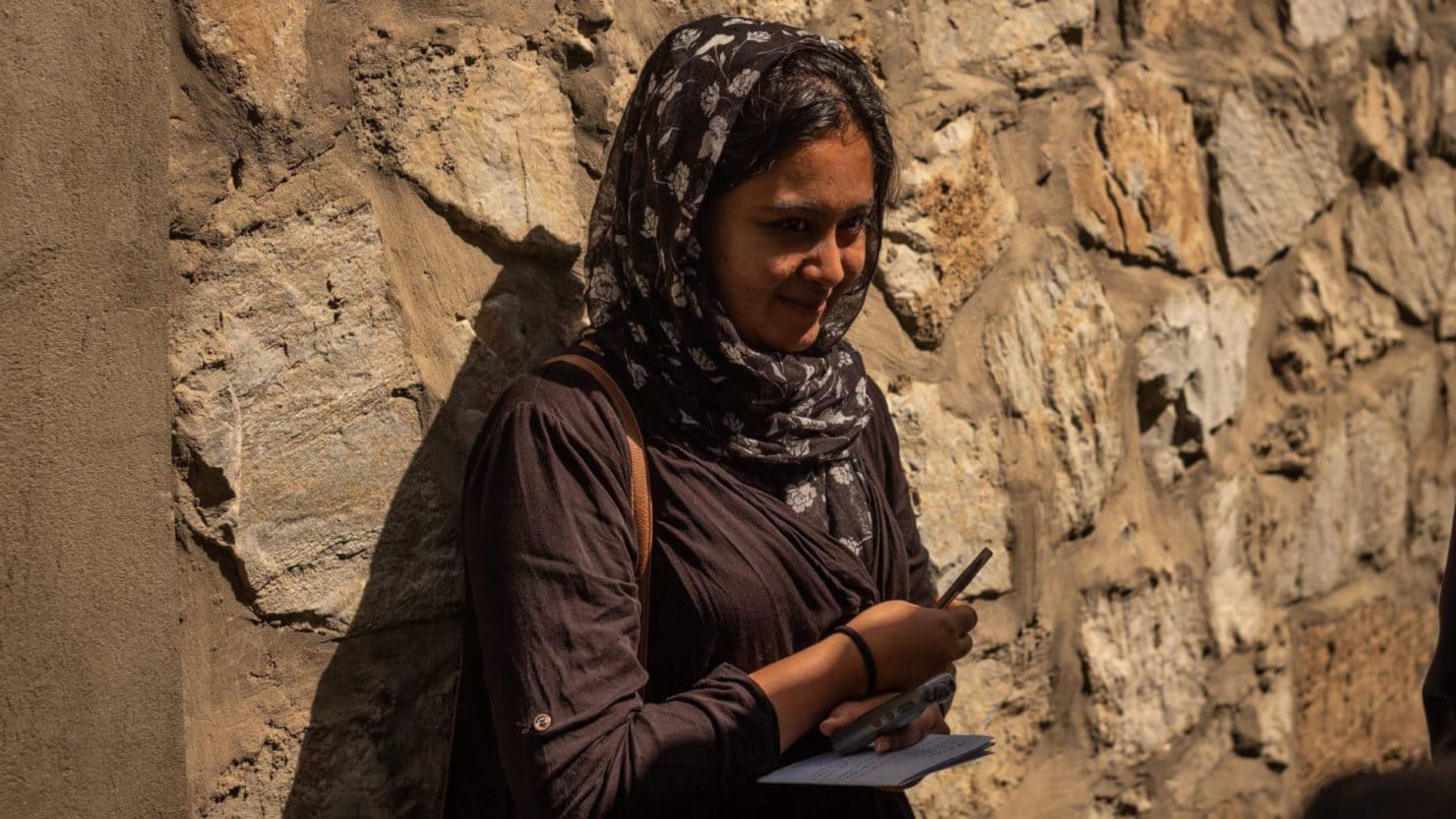YEARS BEFORE BECOMING a journalist, I learned about Afghanistan as a child growing up in Mumbai. Afghanistan holds a significant place in Indian history and mythology, and in school, I learned about places like the ancient region of Gandhara — located in what is now parts of eastern Afghanistan and northwestern Pakistan — a cultural crossroads along the Silk Road known for its fusion of Greek and Buddhist art, which flourished nearly 2,000 years ago. When I arrived as a reporter in 2014, the nation’s political violence felt mostly in the background. I reported on culture and food, and on the people bringing Afghanistan into a new, more progressive era. But as time passed, the fighting intensified, and I increasingly found myself documenting casualties.
Journalists who operate in conflict zones earn an unsavory reputation for the sometimes vulturous eyes we keep on the war and the resulting gloomy work we produce. After a long day of reporting, we console ourselves with the notion that our duty to memory and documentation might spur reform and invigorate the path of justice. Things don’t always turn out so well, but a sense of purpose helps us move from one tragedy to another.

One name really bothered me, though: “ambulance chaser,” a lawyer — or a journalist — who exploits someone else’s suffering for professional gain. The term followed me into the dark and crowded hospital rooms, where I listened to the stories of patients and their doctors.
According to the World Health Organization, until recently, health care in Afghanistan had been steadily improving. Health care access expanded, child deaths declined, and life expectancy increased. Still, relative to other countries, Afghanistan continued to experience tremendous gaps in resources, compounded by government-level corruption and inefficiency.
I would soon witness these on-the-ground realities, which made the efforts of the country’s health care workforce all the more remarkable. Many of the nurses and physicians I encountered were former refugees, having fled the Soviet-Afghan War or subsequent civil wars. And many of these Afghans were educated abroad — in Pakistan, Iran, France — and then returned home after the fall of the Taliban in 2001 to help rebuild a better society. (And this, despite the fact that doctors in Afghanistan only earn about $3,000 or less per year.)
Because infrastructure had been decimated by years of war, it was not uncommon to find medical professionals pioneering basic services. Over the years, I met physicians who had started the first ever clinics in remote districts, including a female dentist who worked in an otherwise conservative community and several female gynecologists operating the only maternal health centers for miles around.
Specialty care was limited, too. In 2017, I visited one of the nation’s only clinics devoted to burn victims in Herat. Many of their patients were women who set themselves on fire to escape a life of domestic violence. During my first of several visits to the hospital, I was startled by women’s screams, echoing across the corridors. The doctors and nurses remained focused, attending to the patients in different stages of healing. “The women of Afghanistan are treated worse than animals,” physician Hasina Ersad explained during my visit. “I want to help these women,” she said, explaining why she chose to work in the burn unit.
Read full article on Undark
